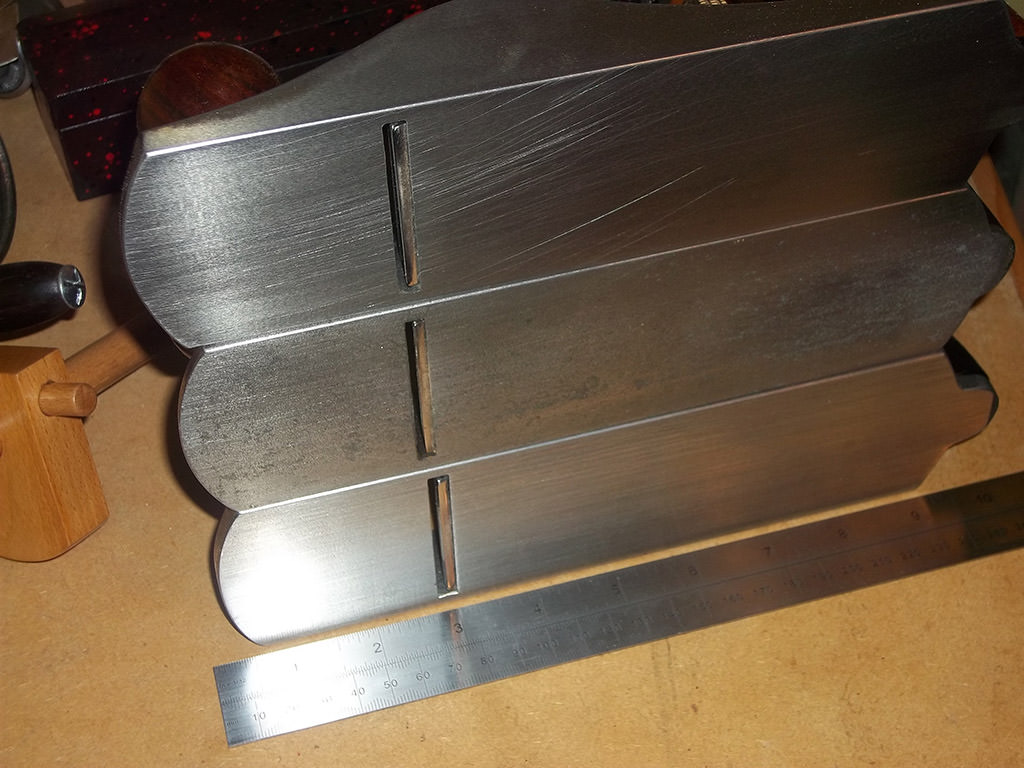That's looking smashing!
rob1713":rdrsjk99 said:
...upon flattening the rear of the iron I notice it has has a small unintentional back bevel on the flat side of the iron.
Intending to keep this or do you want rid of it?
rob1713":rdrsjk99 said:
1 A couple of you have mentioned bedding the wooden stuffing in the casting using an epoxy compound. Im assuming you mean something like Araldite ?
Many option here including things like Milliput and other epoxy plumbing/sealant compounds if they have a long enough working time. You can also use standard epoxy glues or liquids and thicken them up with a powdered filler (which can be just wood dust if it's all you have) to whatever consistency you want to work with.
rob1713":rdrsjk99 said:
2. I'm guessing that this means that once I've done this, the infills are in for good, Is there a more 'non permanent' bedding material I can use?
You can bed metal and wood together using epoxy without the two materials becoming bonded, but this is usually to bed metal into wood and involves waxing or greasing the metal and having the epoxy remain bound to the wood. In theory you could do the reverse, but I think you'd need to seal the wood off well with lacquer or shellac to get it to work well. You could saturate the wood with wax but this would seriously hamper any future interventions so I think it's probably not advisable.
Epoxy isn't the only option though, in the past fillers made largely of whiting or marble dust and hide glue might be used for this sort of thing and something like that can be done with PVA or Cascamite.
rob1713":rdrsjk99 said:
4. Is there any adhesive or treatment that I could try and inject into this crack to further stabilise it ?
Unless you have some hide glue I think there are only two options for this and that's superglue or epoxy. I'm more partial to epoxy for anything over a hairline crack for a few reasons including it being both stronger initially and lasting better, and it's a much better gap filler.
With superglue you use the runny kind and it just naturally wicks into the crack.
With epoxy the best way to do it is to warm the wood well, then mix your epoxy and apply it whereupon you'll see it immediately becomes liquid and sinks in. Doing this I've gotten penetration in excess of 5 or 6mm, which I doubt you can get with superglue because it sets so fast, although I haven't done a direct comparison.
If you'd like to do a cosmetic repair as well and would like to continue to use epoxy it can be tinted or mixed with wood dust and used for that also.













































